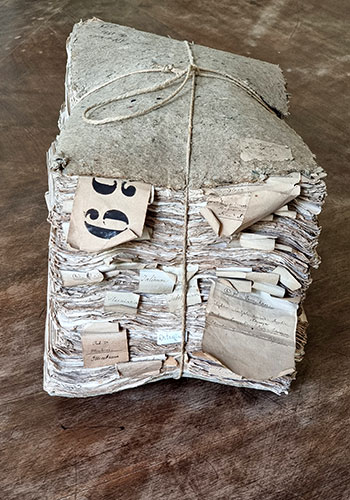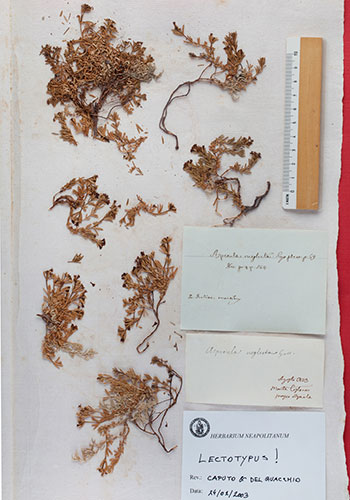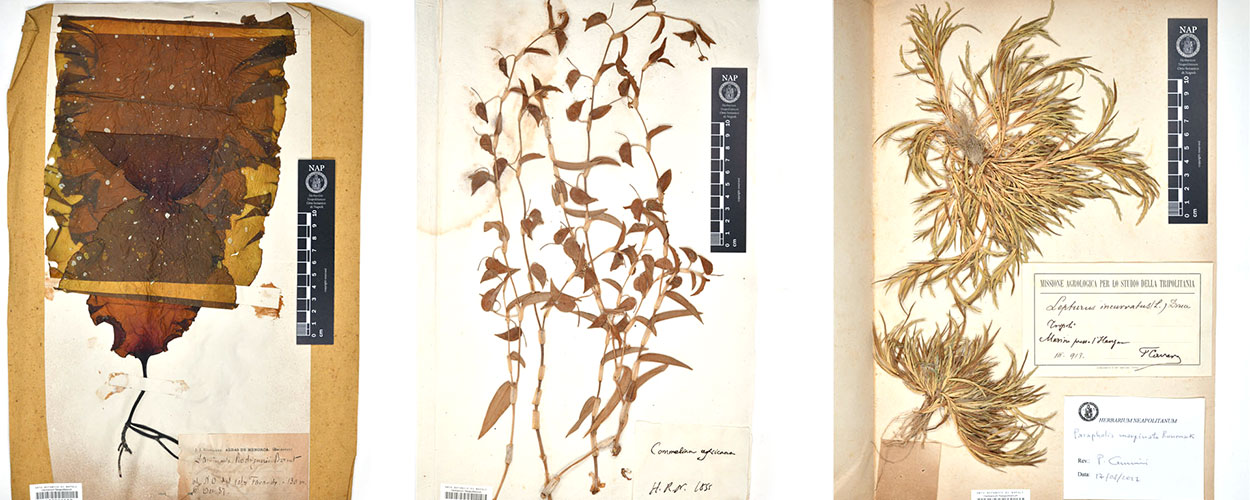Herbaria preserve collections of dried plants, which are generally mounted on paper sheets along with a label containing information such as the scientific name of the plant, the collector's name, the location, and the date of collection. These plant specimens can be preserved for very long periods using extremely simple techniques.
 A folder from Tenore’s collection.
A folder from Tenore’s collection.
Herbarium collections, whose earliest evidence dates back to the 16th century, are crucial working tools of botanists, who are often the exclusive users of these interesting but poorly known museums. The fragility of the specimens and their sensitivity to light exposure have made it difficult to open herbaria to the public. However, modern computer techniques make it possible to disseminate the valuable scientific information accompanying the specimens while also allowing the distribution of their images, often of exceptional beauty.
 The nomenclatural type of Asperula neglecta Guss., today called Cynanchica pyrenaica subsp. neglecta (Guss.) P.Caputo & Del Guacchio.
The nomenclatural type of Asperula neglecta Guss., today called Cynanchica pyrenaica subsp. neglecta (Guss.) P.Caputo & Del Guacchio.


 Sistema Museale di Ateneo
Sistema Museale di Ateneo